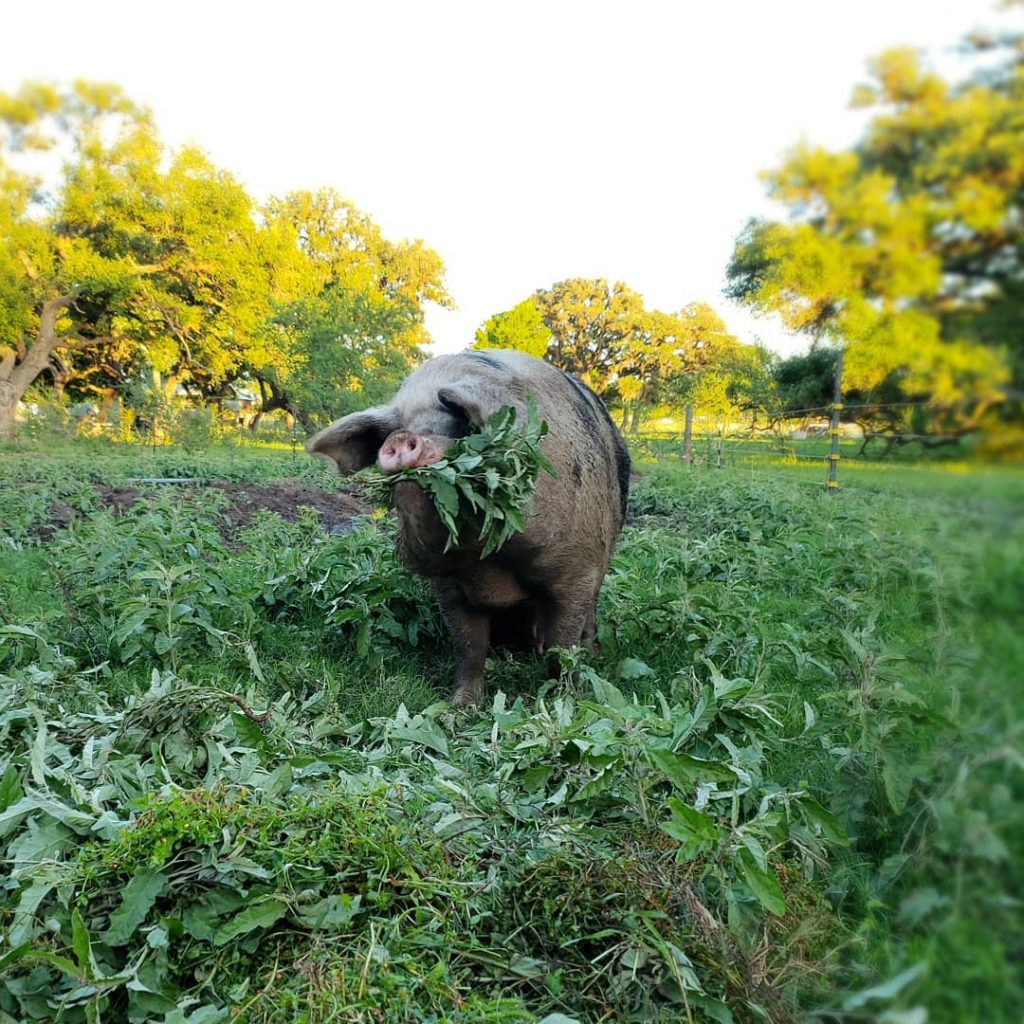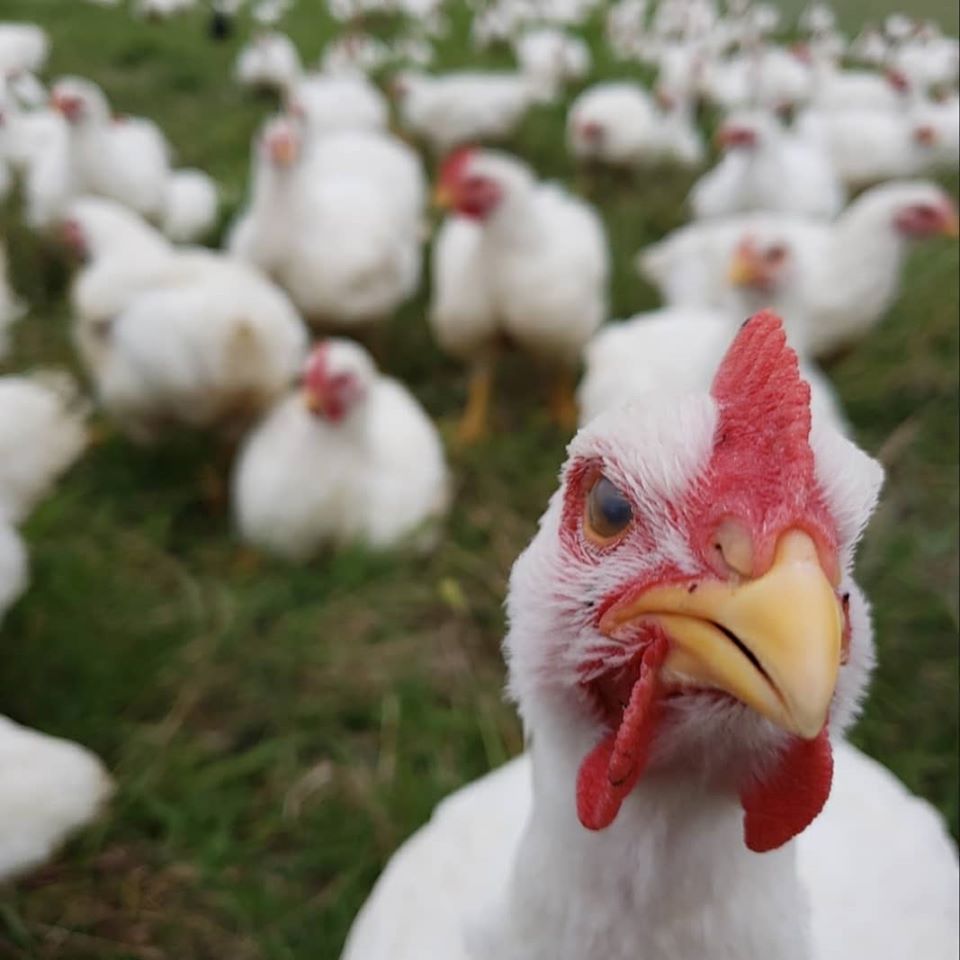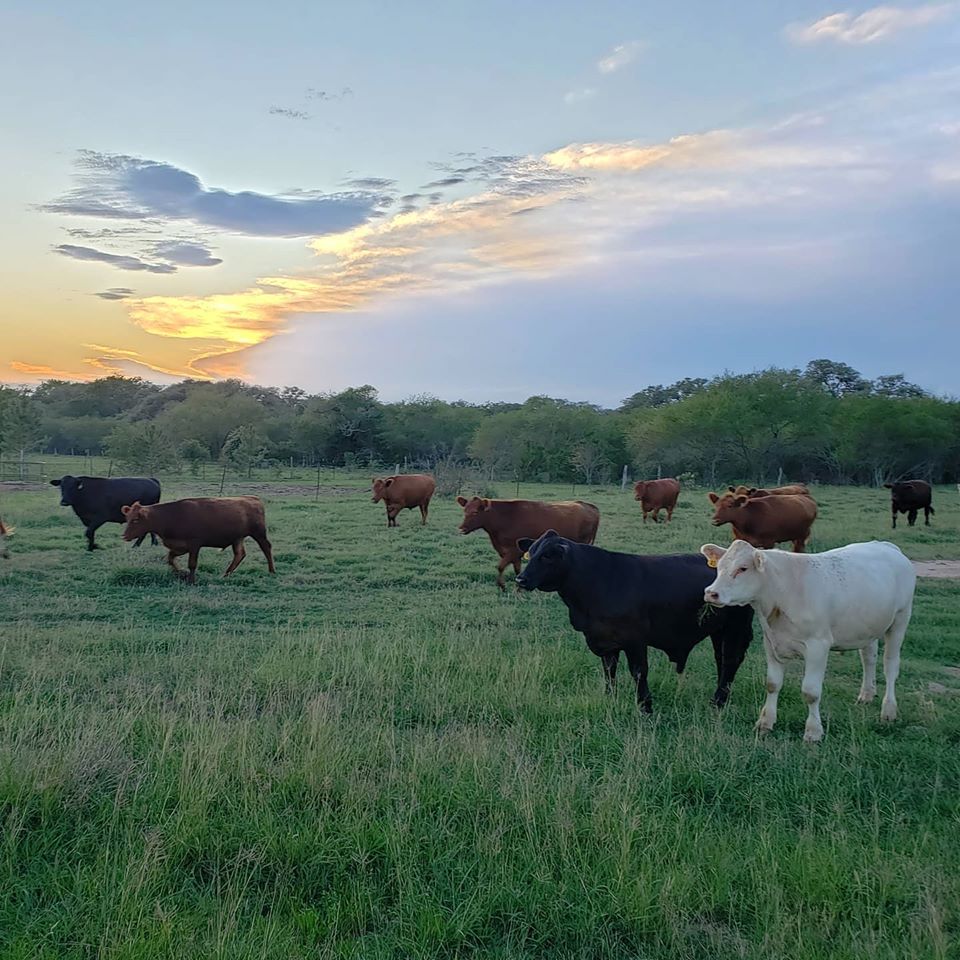
You have probably seen the media coverage recently of the meat packing businesses stricken with Coronavirus outbreaks. With the reports came the footage of the conditions for both the workers and the animals. Grain fed, caged, dirty, inhumane living conditions for the animals and cramped production lines for the workers. This process enables mass production for low cost meat to be sold at the grocery stores but at what cost to the environment as well as the customers health? These images were eye opening to many and I have witnessed many now turning to their local farmers during this time, something as a health advocator I hope will continue after the days of COVID19.
I first learned about what goes into meat production as a customer of a California farm- Autonomy Farms (Autonomyfarms.com). Meredith, the farmer, educated me about the process of raising and producing meat. Where they live, how they are fed and how they are processed for sale has an impact on the environment as well as the health of the final product and consumer. Prior to this I had purchased meat from the grocery store or big box store only. After continuing to learn more about the positive impacts on both the environment as well as health, tasted the difference and felt the difference in my own body I have continued to search out a certain type of meat product.
This weekend my family drove out to the farm that we been purchasing meat from here in Texas- 1915 Farm (1915farm.com). It was an excuse to get out of the house and show my son where the products come from. Seeing the land, the animals homes and talking one on one with the farmer reminded me of all of the reasons why I will continue to buy straight from the farmer and how I chose who to support. Below I’ll describe my own personal preferences.
Pasture Raised Poultry and Pork

USDA does not have a true definition of “pasture raised” and “cage free”. According to the Humane Farm Animal Care definitions “free range” requires 2 square feet of space per bird, outdoors for at least 6 hours per day. HFAC definition of “pasture raised” requires 128 square feet per bird, rotating fields to allow for adequate food supply, outdoors year round with indoor mobile/fixed housing access for protection from predators or weather conditions. When pasture raised, the poultry and pork will obtain most of their diet from grass/forage but they do require some grain supplement. You will not see a label of 100% grass fed/pasture raised poultry or pork.
Why do I look for this label?
Better for the animals. They have room to move around, roam and live outside of severe confinement which decreases their risk for disease.
Better for health
Not only does this type of meat taste better, it has been found to be more nutritious as well. Studies have shown higher Omega 3 levels and higher levels of vitamin and micronutrient levels in pasteurized animals.
Better for the environment
Rotation of the location of pasture allows for animal waste to fertilize the soil and decreases green house gas emissions that result of large piles of waste piling up.
Pasture Raised Grass Fed-Grass Finished Beef

When a product is labeled 100% grass fed this means that they are fed only 100% grass (forage) after they are weaned from milk. No feed lot here! Labeling can be tricky here because pasture raised beef is not the same as 100% grass fed beef as it is possible for the cow to be supplemented with grain while living on a pasture. Grass fed meat has health benefits over grained fed. Grass fed meat is higher in healthy omega 3 as well as higher in Vitamins A and E. Grass Fed also tends to be a leaner meat.
Not treated with antibiotics
Antibiotics are used in meat production to prevent or treat disease (often related to those close living conditions as mentioned above). Use of antibiotics has been linked to antibiotic resistance in humans.
No use of hormones
Hormone use pertains to sheep and cows raised for beef. Hormones are not approved for use in poultry, pigs or dairy cows (except to increase milk production). Hormones are used in meat production to increase growth rate and size of the animal for mass production.
“Certified Organic” is not on my list
I won’t go into the politics of all of this, but I have learned that becoming certified organic is a difficult and costly process that is not always feasible to a small farm.
And most importantly SMALL FARMS
Aside from loving the ability support local, nothing compares to being able to talk straight up with the farmer about everything they put into their farming. I look for a small farm that truly values the care of the animals with humane living conditions, high quality feed and humane processing. I’ll admit, I stalk social media a bit and read reviews prior to purchasing. A great way to met a farmer is to check out your local farmers market. Even in the age of COVID19 these markets are still open and the farmers appreciate continued support. Another way is to search online for farms near you that deliver straight to the house!
In summary I love a small farm with animals humanely raised on pasture, fed quality ingredients and not treated with antibiotics or hormones! Try it for yourself. Can you feel or taste a difference?
